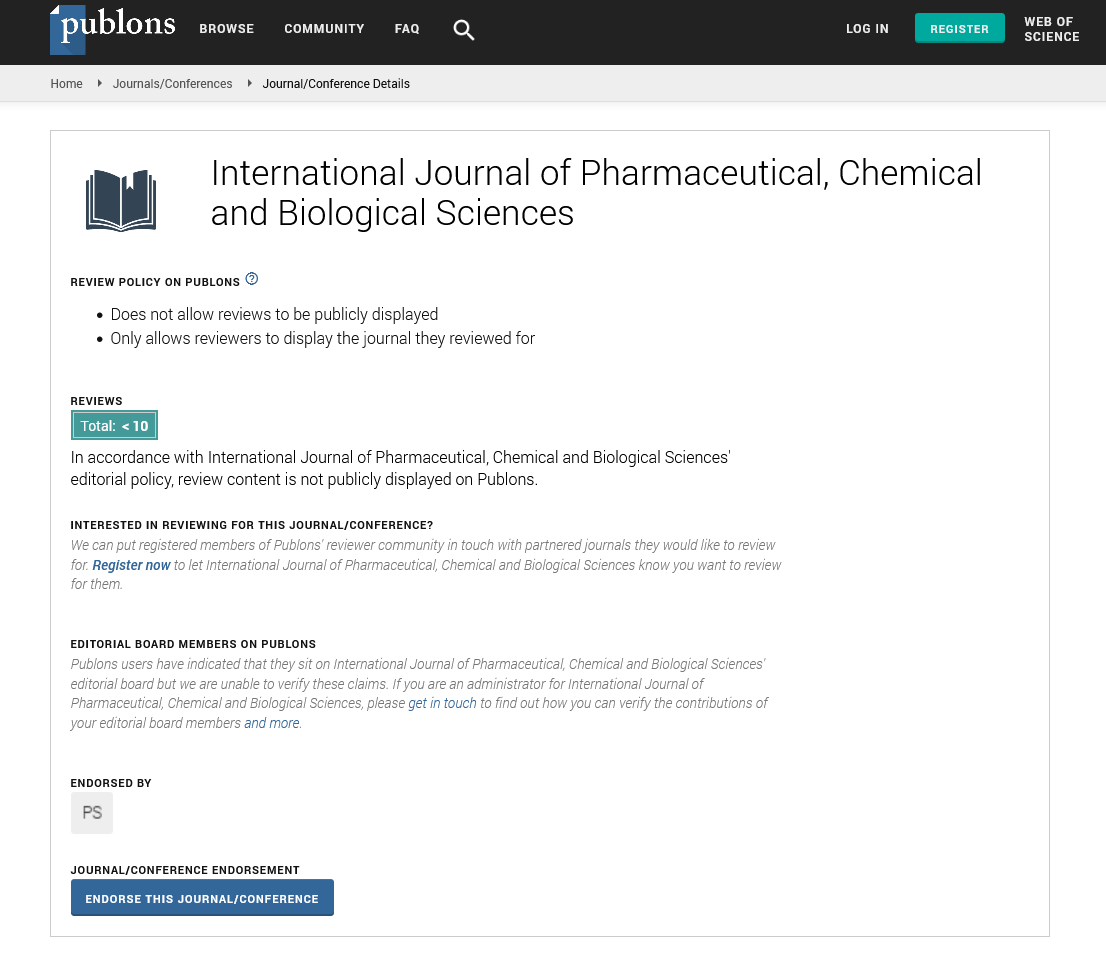Commentary - International Journal of Pharmaceutical, Chemical and Biological Sciences ( 2024) Volume 14, Issue 4
Pharmacovigilance: Ensuring Drug Safety for Public Health
Omar Sayed*Omar Sayed, Department of Chemistry, Cairo University, Japan,
Received: 02-Dec-2024, Manuscript No. ijpcbs-25-160961; Editor assigned: 04-Dec-2024, Pre QC No. ijpcbs-25-160961 (PQ); Reviewed: 18-Dec-2024, QC No. ijpcbs-25-160961; Revised: 23-Dec-2024, Manuscript No. ijpcbs-25-160961 (R); Published: 30-Dec-2024
Description
The primary goal of pharmacovigilance is to safeguard public health by monitoring and assessing the safety of medicines. The metabolism of drugs occurs primarily through two phases: Phase I and Phase II metabolic reactions. These processes are crucial for determining a drug's bioavailability, therapeutic efficacy, and safety profile. Phase I metabolic reactions primarily involve chemical modifications to the drug molecule, predominantly through oxidation, reduction, or hydrolysis. The most significant enzymes responsible for these reactions belong to the Cytochrome P450 (CYP) family, which facilitates the introduction of functional groups into the drug structure. For instance, oxidation reactions can convert lipophilic drugs into more polar metabolites, increasing their water solubility and preparing them for further metabolism or excretion. In this phase, a drug may undergo hydroxylation, Dealkylation, or deamination, leading to either active metabolites or inactive products. The variability in Phase I metabolism among individuals can have profound implications for drug efficacy and safety. Genetic polymorphisms in CYP enzymes can lead to differences in drug metabolism, resulting in altered therapeutic responses and susceptibility to adverse effects. For example, individuals with variations in CYP2D6 activity may metabolize antidepressants or opioids at significantly different rates, impacting treatment outcomes. Understanding these differences is vital in the context of personalized medicine, where tailoring drug therapies based on individual genetic profiles can enhance therapeutic effectiveness and minimize risks. Phase II metabolic reactions, on the other hand, involve conjugation processes that further increase the water solubility of the drug or its metabolites. These reactions typically involve the addition of polar molecules such as glucuronic acid, sulfate, or glutathione to the drug, facilitating its excretion via urine or bile. The main enzymes involved in Phase II metabolism include Uridine 5'-Diphospho Glucuronosyltransferases (UGTs), sulfotransferases, and glutathione S-transferases. For example, the glucuronidation of drugs like morphine and acetaminophen results in metabolites that are less pharmacologically active and more easily excreted. Importantly, the interplay between Phase I and Phase II reactions can significantly influence the overall metabolic fate of a drug. For example, the metabolites produced during Phase I metabolism may either be readily excreted or require further conjugation in Phase II to enhance their solubility and facilitate elimination. The efficiency of both phases can be affected by various factors, including age, sex, diet, and co-administration of other drugs. For instance, the presence of certain foods or medications can induce or inhibit the activity of metabolic enzymes, leading to alterations in drug metabolism and, consequently, clinical outcomes. Drug development efforts must consider these metabolic processes to ensure optimal dosing regimens and therapeutic strategies. In Phase I and Phase II metabolic reactions play pivotal roles in the drug development process.
Acknowledgment
None.
Conflict Of Interest
None.

